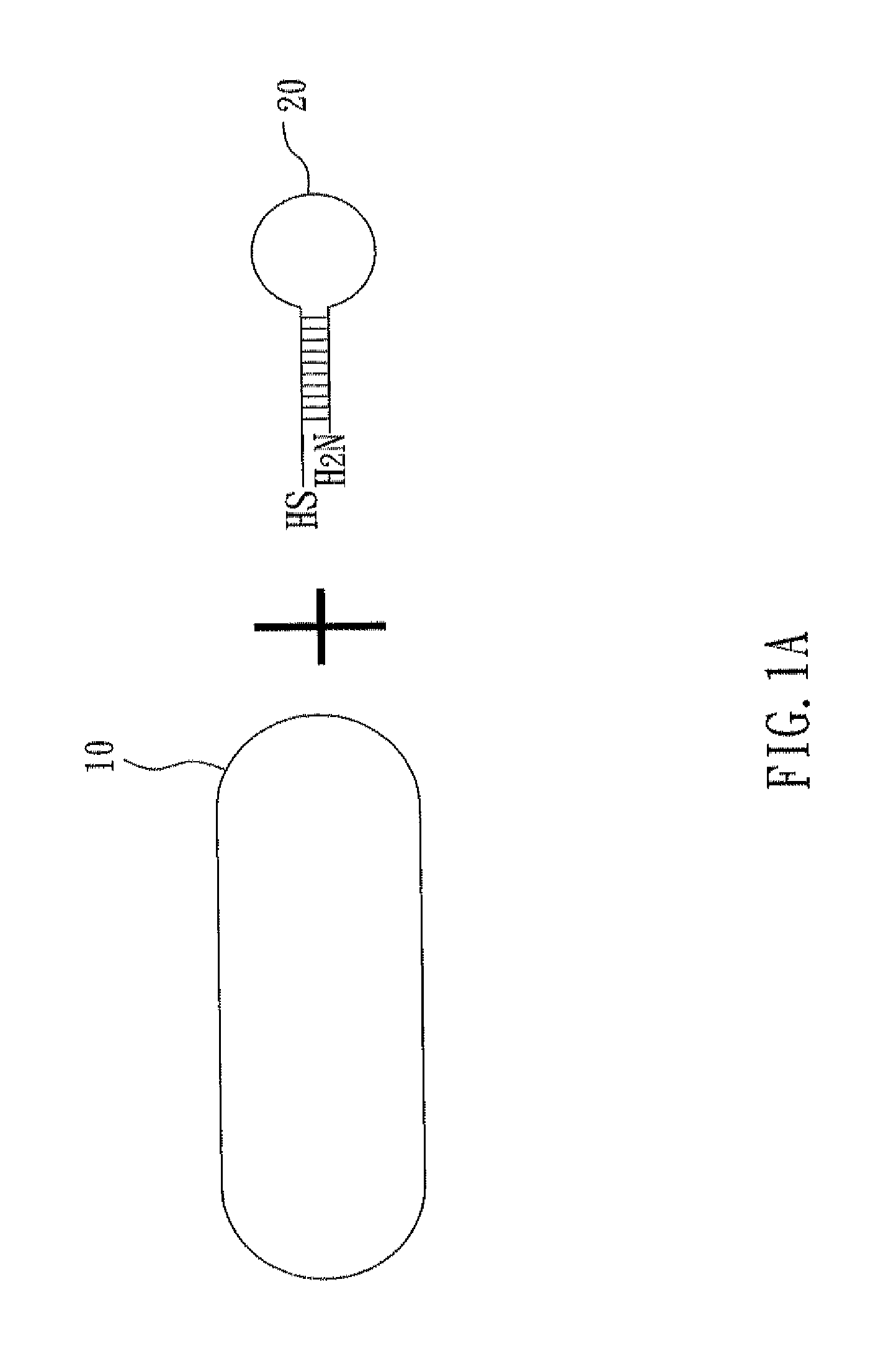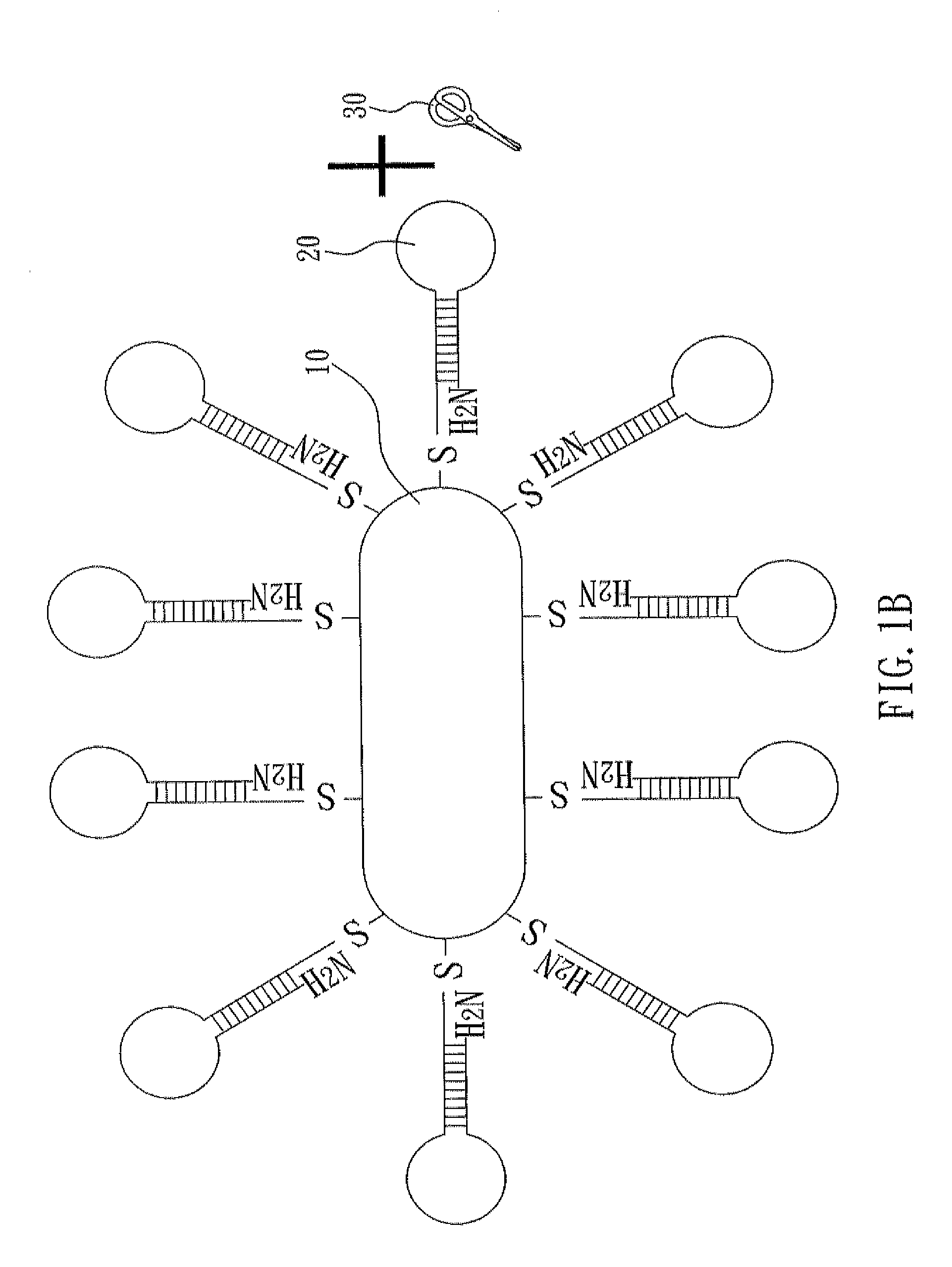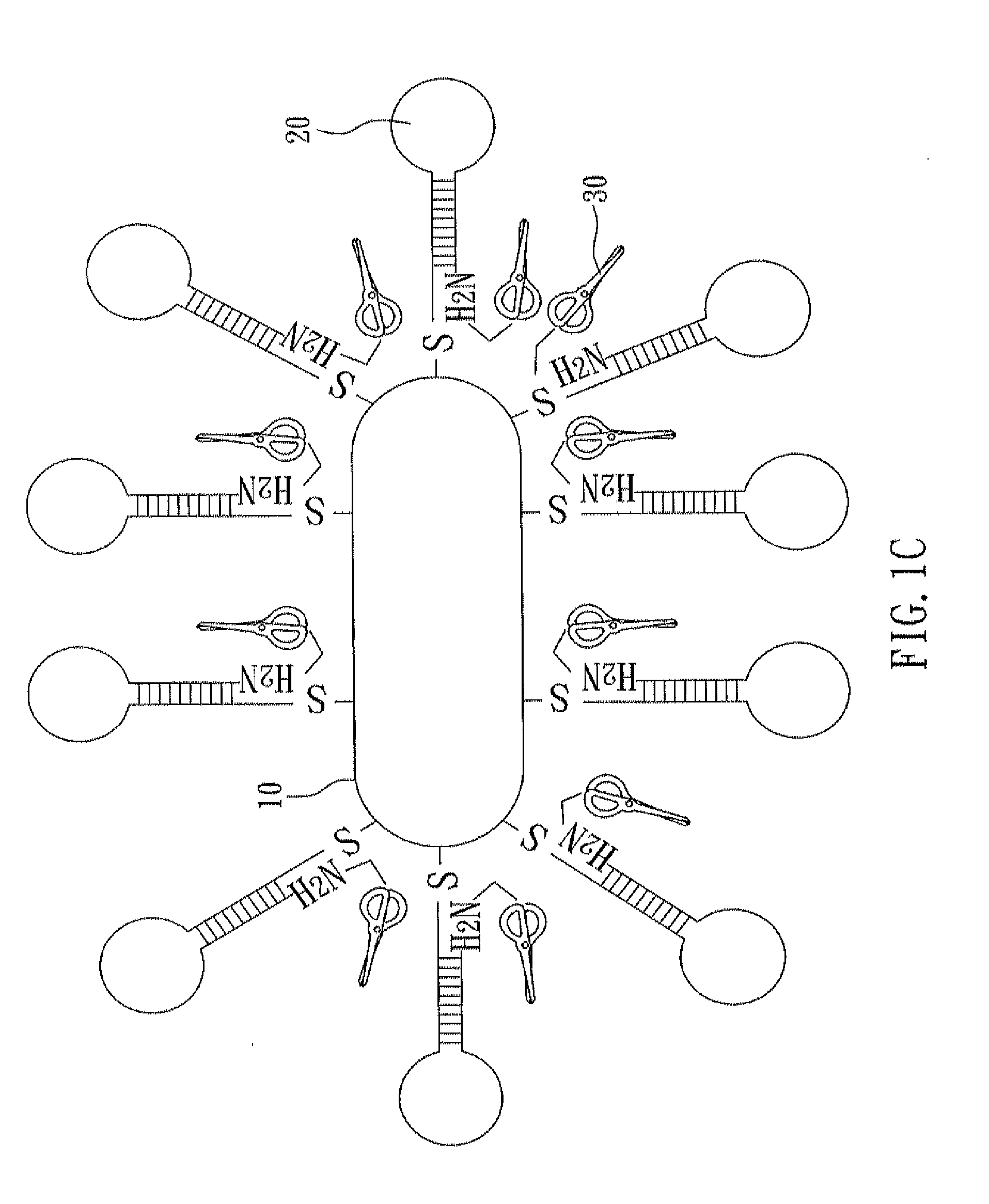Nucleic acid cleavage complex and method for using the same
a technology of nucleic acid and complex, which is applied in the direction of sugar derivates, other chemical processes, organic chemistry, etc., can solve the problems of not being able to achieve specific cleavage on the particular site of dna, and being difficult to meet the requirements of advanced medical and biogenetic engineering techniques
- Summary
- Abstract
- Description
- Claims
- Application Information
AI Technical Summary
Benefits of technology
Problems solved by technology
Method used
Image
Examples
example 1
Preparation for a Nucleic Acid Cleavage Complex
[0032]With reference to FIGS. 1A to 1C, there is shown a flow chart of preparing a nucleic acid cleavage complex of the present invention. First, as shown in FIG. 1A, a nanoparticle 10 and a hairpin polynucleotide chain 20 are prepared. In the present example, the nanoparticle 10 is a gold nanorod, and this nanorod can be prepared by seeded-mediated growth (also named as seeding growth approach). In this method, cetyltrimethylammonium bromide (CTAB, 1.822 g) and AgNO3 (60 μL, 100 mM) are added into aqueous HAuCl4 solution (0.5 mM) and then stirred sufficiently. During the strong agitation, ascorbic acid (300 μL, 100 mM) is added and thus Au3+ is reduced into Au+. After the strong agitation is kept for five seconds, NaBH4 (20 100 mM) is immediately added. Meanwhile, Au+ is reduced into a zerovalent gold atom and formation of cores and growth of crystals start. After two hours, the reaction is accomplished. Ag+ of AgNO3 and Br− of CTAB fo...
example 2
Method for Using the Nucleic Acid Cleavage Complex
[0038]With reference to FIGS. 3A to 3E, there is shown a method for using the nucleic acid cleavage complex of the present invention.
[0039]First, as shown in FIG. 3A, a nucleic acid cleavage complex 1 and a target nucleic acid 40 are provided. The target nucleic acid 40 can be present in a solution and a cell in vitro. The nucleic acid cleavage complex 1 includes: a nanoparticle 10, a nucleic acid cleavage reagent 30, and a polynucleotide chain 20. The polynucleotide chain 20 has a first terminal and a second terminal opposite to the first terminal. The first terminal is connected to the nanoparticle. The second terminal is connected to the nucleic acid cleavage reagent. In addition, the first terminal sequence and the second terminal sequence are base-paired to make the polynucleotide chain form a hairpin.
[0040]As shown in FIG. 3B, the nucleic acid cleavage complex 1 and the target nucleic acid 40 are evenly mixed. Thus, the nucleic...
example2
TEXT EXAMPLE2
DNA Cleavage Test of the Nucleic Acid Cleavage Reagent In Vitro
[0047]First, the pST3 test vector of Test Example 1 is prepared. The abovementioned vector and the nucleic acid cleavage reagent (Cypate) are mixed in a molar ratio of 1:1000. Column 2 of FIG. 5 shows a linear plasmid (Form III plasmid) after the test vector is treated with a restriction enzyme. Columns 3, 4, and 7 of FIG. 5 demonstrate that the test vectors are not cleaved with irradiation for 10 mins (column 3) or without irradiation (columns 4 and 7) and the supercoiled structure (Form I plasmid) remains. Columns 5 and 6 of FIG. 5 show the position of the nucleic acid cleavage reagent (Cypate) in the gel. Columns 8 and 9 of FIG. 5 show that after the mixture containing the test vector and the nucleic acid cleavage reagent is treated with irradiation (column 8) for 5 mins and without irradiation (column 9), the irradiated plasmid is partially cleaved to form nicked open-circular plasmid (Form II plasmid). ...
PUM
| Property | Measurement | Unit |
|---|---|---|
| Particle size | aaaaa | aaaaa |
| Length | aaaaa | aaaaa |
| Acidity | aaaaa | aaaaa |
Abstract
Description
Claims
Application Information
 Login to View More
Login to View More - Generate Ideas
- Intellectual Property
- Life Sciences
- Materials
- Tech Scout
- Unparalleled Data Quality
- Higher Quality Content
- 60% Fewer Hallucinations
Browse by: Latest US Patents, China's latest patents, Technical Efficacy Thesaurus, Application Domain, Technology Topic, Popular Technical Reports.
© 2025 PatSnap. All rights reserved.Legal|Privacy policy|Modern Slavery Act Transparency Statement|Sitemap|About US| Contact US: help@patsnap.com



